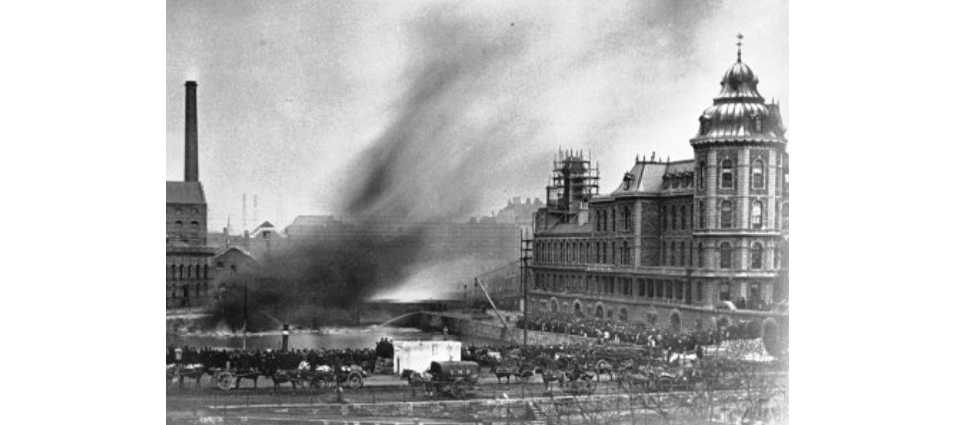The following is based on Gordon Faulkner’s article on the Merchants Landing website.
Bathurst Basin today is a quiet dock with little maritime activity; but not on the morning of 21st November 1888. That day a Jersey schooner, the “United”, was moved from her overnight berth in the entrance lock outside the “Ostrich” to a position just inside the basin itself. She had been left in this unaccustomed position because she was loaded with 300 barrels (some 50 tons) of naphtha, a highly flammable product closely related to petroleum spirit and obtained by the distillation of coal tar. The authorities were well aware of the danger. Her four crew members were Master Henry Cartwright, Mate Joseph Cartwright, seaman Joseph Basle and a young lad Toby.
Cartwright intended to depart for London as soon as the strong winds eased. The Master had banned any flame so there was no smoking, cooking or even tea-making. A constable from the river police paid a visit early that morning but, aware that the master was keen to depart, soon left. Just after 11 a.m. a tremendous explosion occurred in the United. Parts of the ship were flung into the air accompanied by “a wall of flame of appalling fierceness”. The burning naphtha floated on and spread over the water surface. It was driven towards other ships in the basin. These too were soon on fire. All the lower windows of the adjacent General Hospital were blown out as were those of the Ostrich and the houses in Guinea Street.
Robinson’s Oil and Cake Mill on the west side of the lock was also affected and indeed its numerous clerks were blown off their stools but one had the presence of mind to run to the nearby river police station and call for assistance. A squad of policemen soon arrived to help as did the city fire brigade with its horse-drawn fire engine. The docks water-float also arrived and all were pumping water onto the burning vessel. Naturally in no time at all a large number of spectators accumulated. They also needed controlling.
All in all it took three hours to bring the inferno under control. The human cost of the incident was high. The Master, Mate and lad Toby all lost their lives. Seaman Basle was blown 40ft through the air but survived with a broken leg. He was picked up from the water by a boat from another ship.
The General Hospital had lost most of its lower windows on the side that faced the basin so to protect the bed-ridden against the elements there was clearly an urgent need for glaziers. The response in 1888 was to send out a call for glaziers and they arrived from all over the city. By nightfall it is said that all the windows in the General Hospital had been replaced. I think we may have trouble doing that today. Surely today’s bureaucracy and/or Health & Safety Regulations would get in the way somewhere.
The whole incident lasted for some three hours, time enough even in 1880 for the press to hear about it and dispatch a photographer who recorded the scene for posterity. It shows the naphtha blazing on the water outside what is now Byzantine Court and is really quite spectacular.
Pedestrian Diversions has the following video presentation of the incident.

